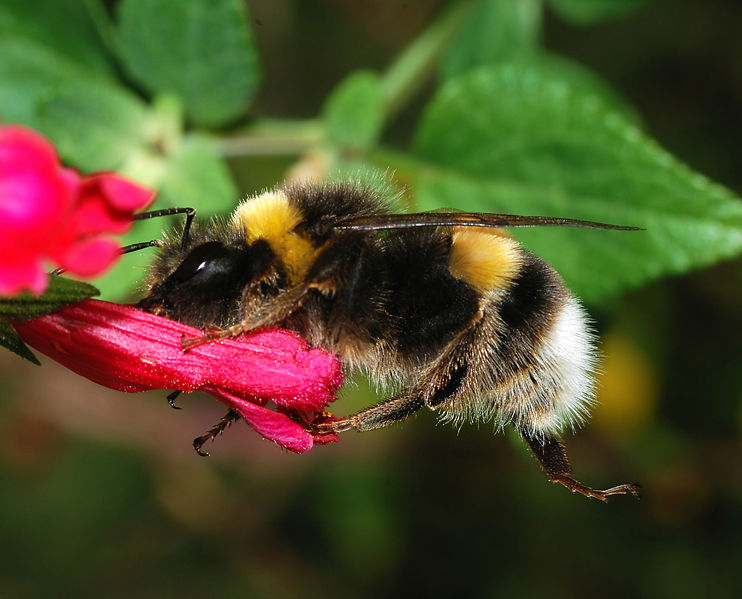A petition was filed by the Society for Invertebrate Conservation to add several species of bumblebee to the endangered species list. The Rusty Patched, Western, and Yellow Bumblebees have all seen a drop in population in current years, in addition to the Franklin's Bumblebee which is already considered a critically endangered species. The society hopes that the US Department of Agriculture will approve actions to measure and regulate commercial bumblebee movement between states. Diseases are killing off the bumbles, with two species (Franklin's and Rusty Patched) nearing extinction. The petition asks that bumblebees receive certification that they are disease-free in order to be moved to non-native areas in the country.
Bumblebees are most known for their transmission of pollen between plants, vibrating its flight muscles to shake pollen out of oddly-shaped plants, and later to disperse the pollen. Also, the furry hairs on their backs, called pile, accumulates electrostatic charges as they fly, making the pollen attracted to their pile. Only the queen and the worker bees have the ability to sting, while the small male drone bumblebee do not. They are not aggressive insects though and will not sting unless necessary, as the worker bees will die after stinging a human and losing its barb in our muscle tissue. Bumblebees do produce honey, as their honey bee cousins are known for, but they only produce it in quantities to feed their young.
Bumblebees populations have been decreasing because of habitat destruction and the use of pesticides. Bees are estimated to have lost 90% of their population in the last 50 years, with Africanized bees taking over some areas. Bumblebees are especially vulnerable where cotton is grown, as the crop tends to be sprayed with insecticide many times over the growing season. Even in typical lawns, bumblebees are losing ground, as homeowners treat dandelions and clovers as weeds, stripping the bees of necessary nutrients. Other types of development of property and destruction of natural weeds and flowers are just as harmful. Conservationists are hoping to restore wildlife areas and encourage diversifying landscapes with bee-friendly plants.



never knew they were endangered- always a beautiful and welcome sign of summer !
ReplyDelete